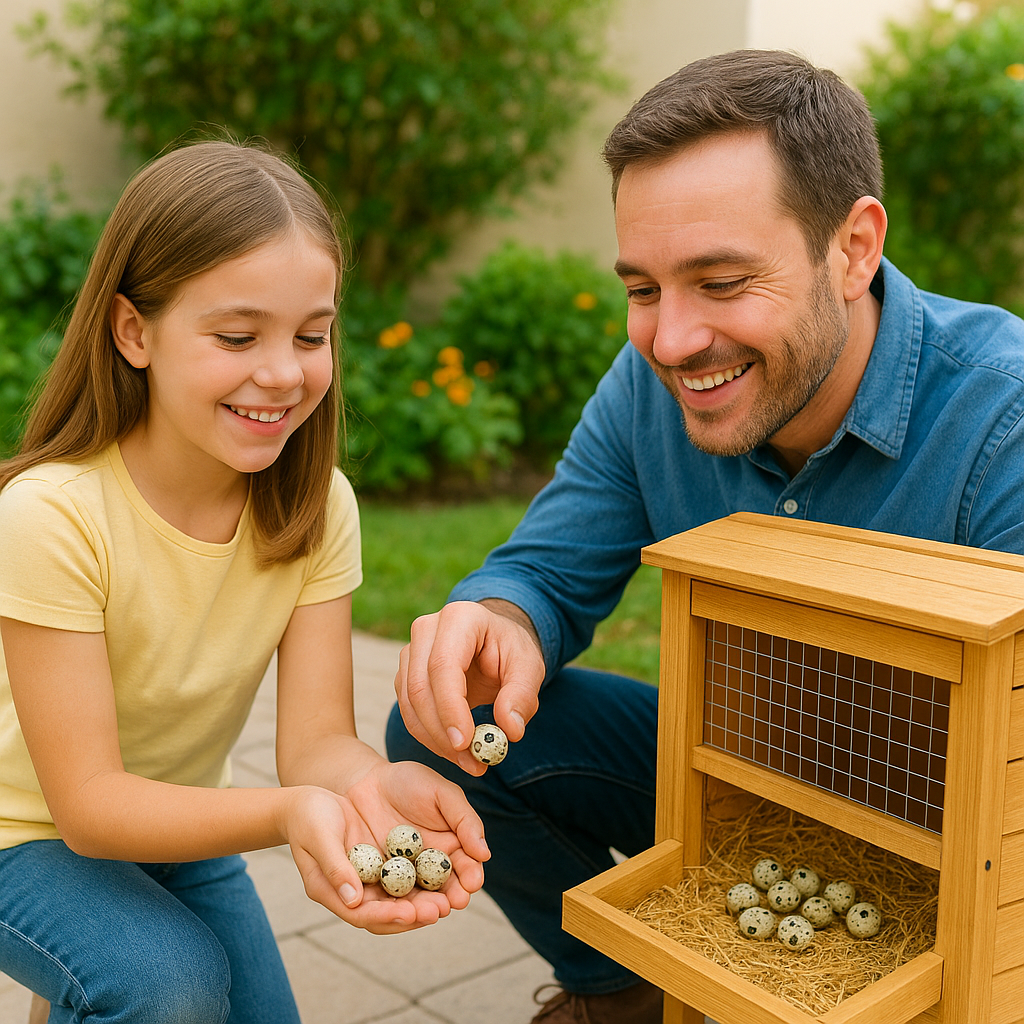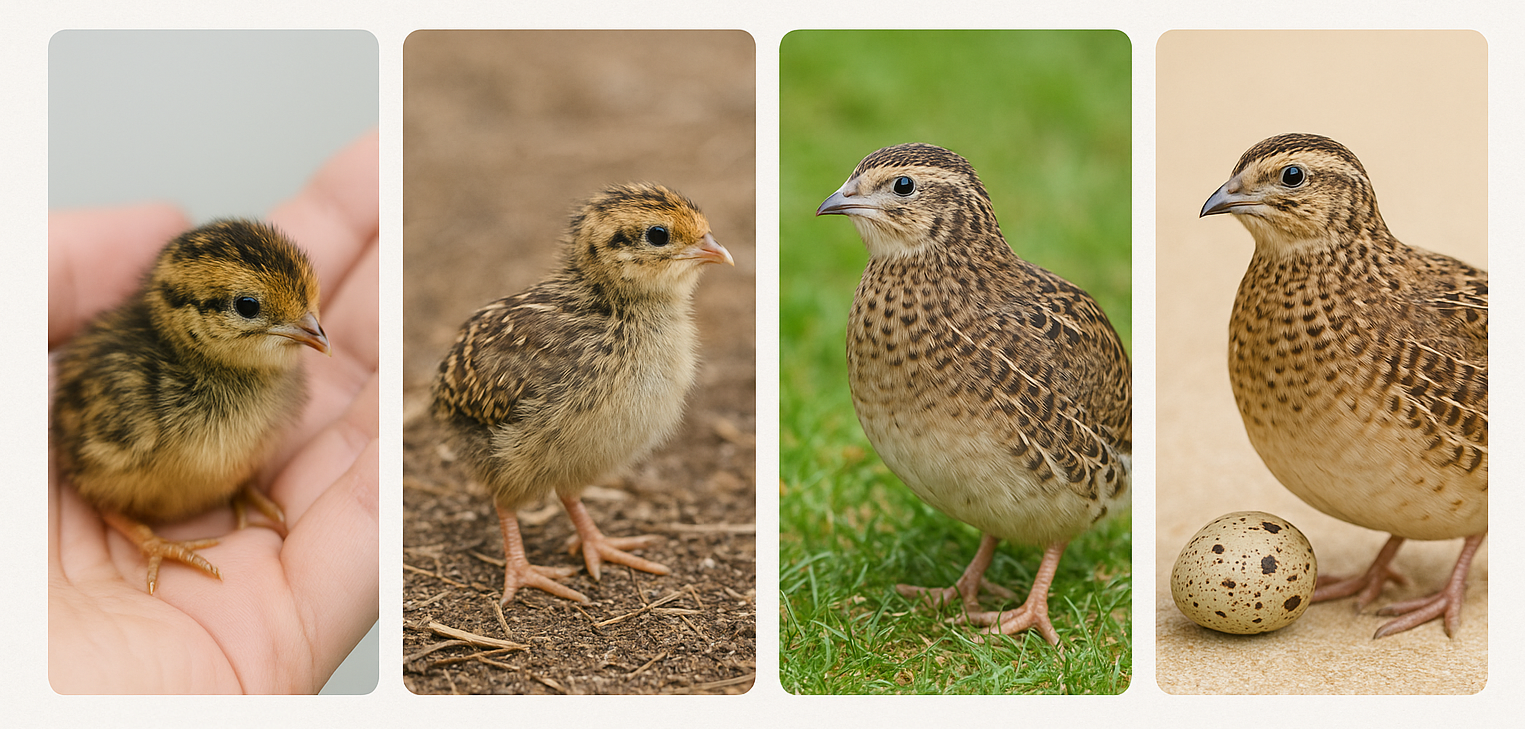Raising Quail at Home: The Simple Joy of Backyard Quail Keeping

Quail Keeping: The Easiest Path to Homegrown Eggs You've Never Considered
Imagine collecting fresh, nutritious eggs from your own backyard without the noise, space requirements, or hassle of keeping chickens. This isn't a fantasy—it's the everyday reality for a growing number of urban and suburban homesteaders who have discovered the pure joy of raising quail. If you've ever wondered about producing your own food but felt limited by space or time, quail might be your perfect solution.
Why Quail Are the Ultimate Backyard Bird
Forget everything you know about traditional poultry. Keeping quail offers a unique set of advantages that makes them arguably the most user-friendly bird for beginners and experts alike.
- Space Superstars: A thriving flock of 10-12 quail can live happily in a cage or hutch the size of a large dog crate. They don't require a run, a large coop, or even a backyard. A balcony, garage, or spare room can easily become a productive quail habitat.
- The Speed of Life: The most jaw-dropping fact about domestic quail is their incredible growth rate. We're talking about going from a day-old chick to a fully-laying adult in about the same time it takes to binge-watch a couple of TV series.
- Whisper-Quiet Operation: Unlike roosters, which are often banned in city limits, male quail have a soft, short call. The hens are even quieter, producing nothing more than pleasant little chirps and trills. Your neighbors will likely never know they're there.
The Need for Speed: From Chick to Egg in Record Time
This is where quail truly shine and leave every other poultry bird in the dust.

How Fast Do Quail Mature?
The timeline for quail productivity is almost unbelievable:
- Day 1: You receive tiny, fluffy quail chicks.
- Week 6-8: That's it! In just under two months, your female quail (hens) will lay their first egg. Yes, you read that correctly. While chicken owners are still waiting for their pullets to mature at 5-6 months, you are already collecting your own daily breakfast.
How Many Eggs Can You Expect?
A happy, healthy quail hen is a laying machine. While they may be small, they are mighty productive.
- Annual Yield: You can expect 250-300 eggs per year from a single quail hen. Their egg production often surpasses that of most chicken breeds on a pound-for-pound basis.
- The Daily Ritual: A hen will typically lay one egg almost every single day, usually in the afternoon. Their prolific nature is what makes raising quail for eggs so incredibly rewarding.
The "Set It and Forget It" Bird: Hardy and Low-Maintenance
One of the biggest fears for new poultry keepers is dealing with sick birds. Here’s the best part: quail are famously robust.
Legendary Hardiness
Quail health is generally excellent. Bred from wild stock, they have retained a strong, resilient nature.
- Less Prone to Common Poultry Diseases: Many illnesses that affect chickens (like Marek's disease) are not a concern for quail.
- Tolerance to Conditions: They are surprisingly adaptable to a range of temperatures once they are fully feathered.
- Simple Needs: Their hardiness translates to less worry for you. Their core requirements are simple: clean water, proper feed, a dry space, and protection from predators.
What Do Quail Need? The Simple Checklist
- Housing: A secure cage or hutch with solid flooring or fine wire mesh to protect their feet.
- Feed: A high-protein game bird or turkey starter crumble (24-30% for chicks, 18-20% for layers).
- Water: Clean water available at all times in a shallow dish they can't drown in.
- Protection: Their housing must be secure from predators like raccoons, cats, and birds of prey.
Getting Started: Your Quail Journey Begins Here
Starting your flock is easier than you think. You have two main paths:
- Hatching Eggs: You can incubate fertile eggs (which takes about 17-18 days). This option offers the most variety in terms of quail breeds and colors.
- Day-Old Chicks: The most popular option for beginners. You skip the incubation process and jump straight to the adorable brooding phase, which lasts about 3-4 weeks before they move to their adult home.
Conclusion: Your Mini Homestead Awaits
Raising quail is more than a hobby; it's a gateway to self-sufficiency that fits into almost any lifestyle. They offer a faster return on investment, require less work, and provide more joy per square foot than any other livestock. The simple pleasure of collecting a handful of warm, speckled eggs from your own flock is an experience that never gets old.
If you have been waiting for a sign to start your homesteading journey, this is it. Quail are waiting to show you just how easy and fun producing your own food can be.
